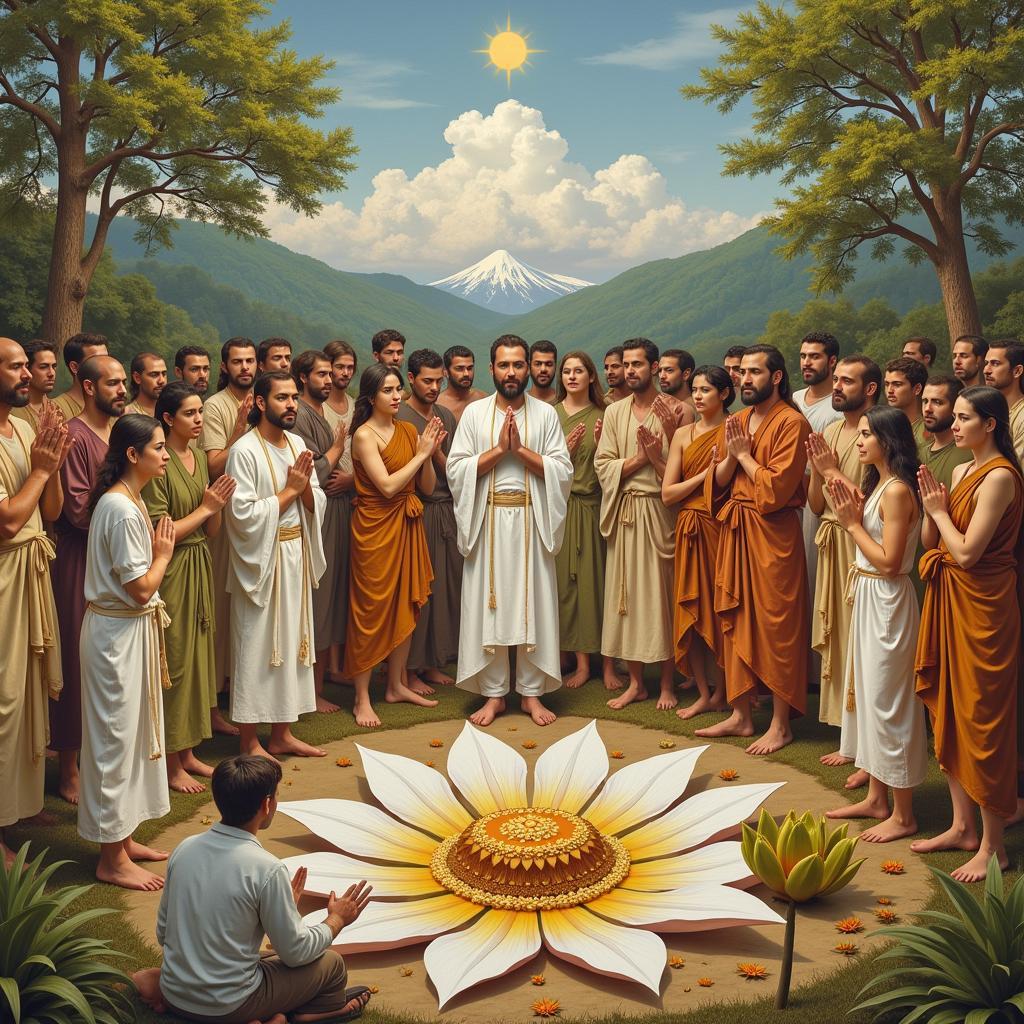The term “White Lotus Society” often appears in AP World History curriculum when studying rebellions and social movements in late imperial China. However, it’s crucial to understand that there wasn’t just one monolithic “White Lotus Society.” The term actually encompasses a variety of religious sects and rebel groups that emerged and evolved over several centuries.
These groups, while sharing some common threads, differed significantly in their beliefs, practices, and goals. Let’s delve deeper into the complex and fascinating history of the White Lotus movement.
Unraveling the Layers: Origins and Evolution of the White Lotus
The earliest forms of White Lotus beliefs can be traced back to the 12th and 13th centuries, during the Song and Yuan dynasties. These early groups blended elements of Buddhism, Daoism, and Manichaeism, emphasizing Maitreya, the future Buddha, as a central figure. They promised salvation and a utopian future, often appealing to the marginalized and disenfranchised in society.
 Early White Lotus Gathering
Early White Lotus Gathering
The Yuan Dynasty and the Rise of Rebellion
Under the Mongol-led Yuan dynasty (1271-1368), societal tensions rose due to economic hardship and ethnic discrimination against the Han Chinese. This period saw the White Lotus movement transforming from primarily religious sects into organized resistance groups.
One prominent figure was Han Shantong, a leader who used White Lotus teachings to galvanize opposition against the Yuan. Although the rebellion he sparked ultimately failed, it laid the groundwork for future uprisings.
 Rebellion Against the Yuan Dynasty
Rebellion Against the Yuan Dynasty
The Ming and Qing Dynasties: From Repression to Resurgence
The Ming dynasty (1368-1644) initially saw the White Lotus as a threat and implemented measures to suppress their activities. However, the movement persisted, often going underground and re-emerging during times of crisis.
By the Qing dynasty (1644-1912), the White Lotus was firmly established as a symbol of resistance against the ruling Manchu government. Large-scale rebellions, such as the White Lotus Rebellion of 1796-1804, shook the foundations of the Qing empire and highlighted the deep-seated grievances of the populace.
Why is the White Lotus Society Important in AP World History?
The White Lotus Society, in its various forms, provides valuable insights into several key themes relevant to AP World History:
- Syncretism: The blending of Buddhist, Daoist, and other religious traditions within the White Lotus demonstrates the fluidity of religious boundaries and the adaptability of belief systems.
- Social Stratification and Rebellion: The appeal of the White Lotus to lower classes highlights the social and economic disparities that fueled unrest and challenged established hierarchies.
- State Building and Resistance: The White Lotus rebellions serve as powerful examples of how internal challenges and popular movements shaped the course of Chinese history.
Beyond a Name: Understanding the Complexity
It’s important to remember that the “White Lotus Society” was not a singular entity with a fixed ideology or structure. The term encompasses a complex tapestry of groups and beliefs, united by a common thread of resistance and a yearning for a better world.
By recognizing this complexity and delving into the specific historical contexts, we can gain a richer understanding of the White Lotus movement and its enduring legacy in Chinese history.
Expert Insight
“While often viewed through the lens of rebellion, the White Lotus movement was deeply rooted in religious beliefs and offered a message of hope and salvation to its followers, particularly during times of hardship and oppression.” – Dr. Li Wei, Professor of Chinese History
FAQs about the White Lotus Society
1. Was the White Lotus Society always a rebel organization?
No, the early forms of White Lotus beliefs were primarily religious in nature. It was during periods of social and political upheaval that they transformed into resistance movements.
2. What were the main goals of the White Lotus rebellions?
The goals varied depending on the specific rebellion and its leaders, but common themes included overthrowing oppressive rulers, establishing a just society, and restoring native Chinese rule.
3. Why was the White Lotus seen as a threat by the ruling dynasties?
The White Lotus represented a powerful force that challenged the authority of the ruling elite. Their message of resistance, coupled with their ability to mobilize large numbers of people, made them a significant threat to dynastic stability.
4. How did the White Lotus Society influence later events in Chinese history?
While the White Lotus rebellions ultimately failed to overthrow the Qing dynasty, they contributed to its weakening and paved the way for future uprisings. Their legacy of resistance continued to inspire later revolutionary movements in China.
5. What are some good resources for learning more about the White Lotus Society?
Academic journals specializing in Chinese history, books written by historians focusing on this period, and reputable online sources are all excellent places to begin your research.
Need more support?
Contact our 24/7 customer support team at Phone Number: 02043854663, Email: [email protected], or visit our address: Khu 34, Bac Giang, 260000, Vietnam.